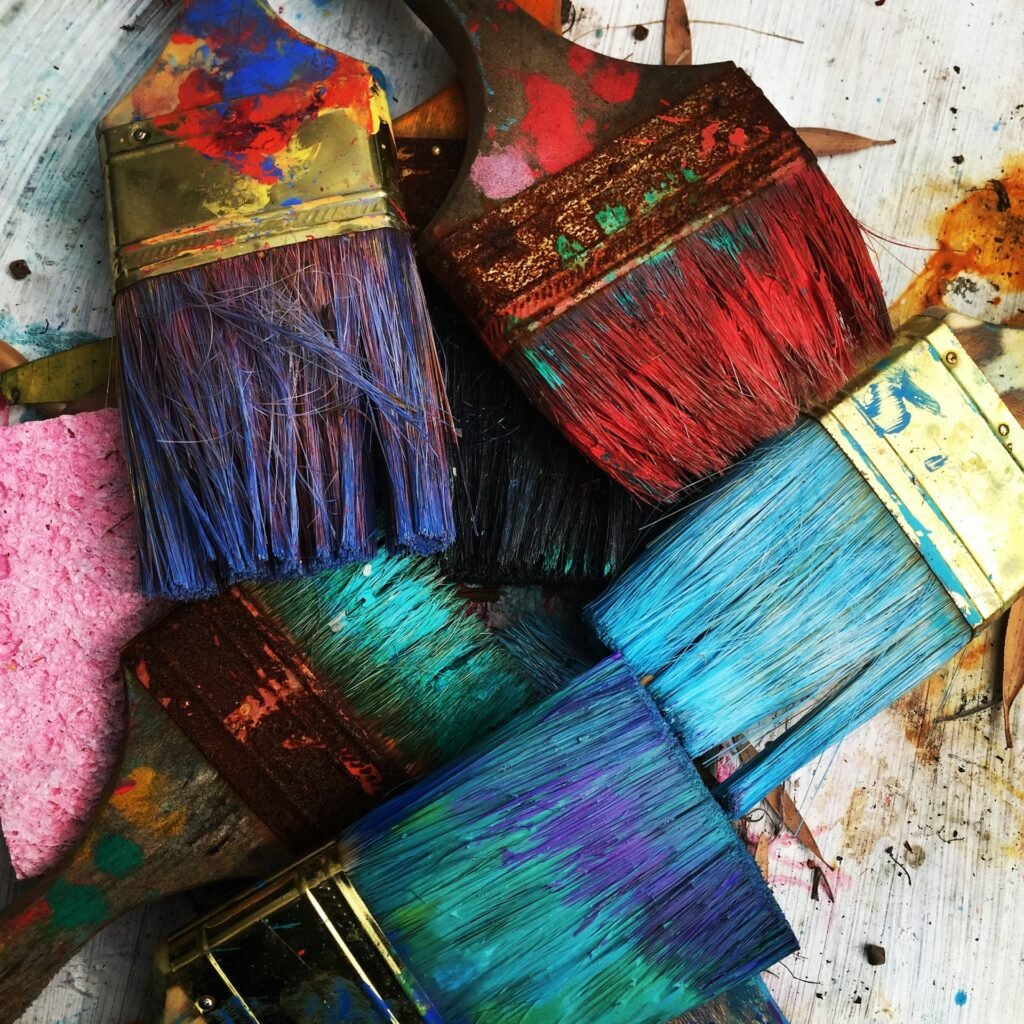
Caricatronchi: The Rise of Digital Caricature Art That’s Redefining Identity in the Age of AI
Introduction to Digital Caricature Art
The realm of caricature art has a long-standing history, traditionally characterized by exaggerated features and playful satire, primarily executed through traditional mediums such as pencil, ink, and paint. The advent of digital technology has marked a significant evolution in this art form, resulting in the emergence of digital caricature art. This innovative approach not only retains the essence of classic caricatures but also enhances the creative possibilities available to artists. With the introduction of sophisticated software and drawing tablets, artists can now create caricatures that exhibit intricate details, vibrant colors, and a rapid turnaround time.
Digital caricature art finds its roots in the advancements of graphic design software such as Adobe Illustrator and Photoshop, which allow for precision and flexibility. These tools empower artists to manipulate and shape their creations more freely than ever. Once confined to physical canvas, caricature artists are now embracing the digital canvas, where the constraints of traditional methods are lifted. This shift has catalyzed a new wave of artistic expression, enabling practitioners to experiment with styles that blend realism with exaggeration in previously unimagined ways.
Moreover, the rise of social media has played a pivotal role in the proliferation of digital caricature art. Platforms designed for visual content sharing have provided artists with a global audience, making their work accessible to a diverse audience. This democratization of art fosters community and collaboration, encouraging artists to draw inspiration from one another, thus broadening the creative landscape. While traditional caricatures have their charm, the digital variant not only preserves the humor and expression inherent in caricature art but also challenges artists to innovate continuously. With the relentless pace of technological advancements, digital caricature art is poised to redefine identity and artistic representation in the contemporary digital landscape.
The Role of AI in Caricatronchi
Artificial intelligence (AI) has made significant strides in influencing various fields, and the realm of digital caricature art, or caricatronchi, is no exception. The integration of AI technologies has transformed how artists create caricatures, enabling them to enhance their artistic expression and redefine identity representation. One prominent area where AI plays a crucial role is in the development of sophisticated tools that assist artists in their creative process.
AI-powered software can analyze features and styles, providing artists with various options to refine their work. These tools often offer suggestions for colors, facial features, and other elements, helping artists streamline their workflow. As a result, digital caricature artists can focus on their unique style, while AI handles tedious aspects of the production process. This synergy between artists and technology fosters a new environment for creativity, where the possibilities of expression are expanded through the use of advanced technology.
The blend of AI technology with digital caricature art is reshaping the landscape of artistic expression. As new techniques and tools arise, they contribute to evolving notions of identity representation within the caricatronchi sphere. Artists are no longer confined to traditional methods; instead, they are empowered to experiment with innovative styles and redraft the boundaries of what caricature art can be.
Impact on Cultural Identity
Digital caricature art, through platforms such as Caricatronchi, has emerged as a significant medium that reflects and reshapes cultural identities in contemporary society. As the world becomes increasingly interconnected, caricatures serve as a unique form of expression that highlights diverse cultural nuances and challenges prevailing societal norms. By distorting and exaggerating certain features, artists can bring humor and critical commentary to various cultural representations, making them accessible and engaging for a wider audience.
Moreover, the interactive nature of digital platforms allows users to create and share their caricatures, contributing to a collaborative dialogue about identity. This democratization of art promotes a sense of inclusion, where individuals from different backgrounds can contribute their perspectives, resulting in a rich tapestry of cultural expression. Caricatronchi, for instance, not only showcases artists but also empowers users to create their caricatures, thus amplifying voices that might otherwise remain unheard.
As caricature art often reflects societal trends and issues, it also plays a role in critiquing and celebrating cultural practices. Artists use humor to address topics such as stereotypes, ethnic heritage, and globalization, provoking conversations that inspire self-reflection and a deeper understanding of one’s identity. By employing caricatures as a means of social commentary, platforms like Caricatronchi enable an examination of cultural ideals and challenges, fostering a space for contemplation on how these elements shape personal and collective identities.
In conclusion, digital caricature art has the potential to redefine cultural identity significantly. By bridging gaps between different cultures and encouraging dialogue, artists can celebrate diversity while addressing societal issues, thus contributing meaningfully to the ongoing conversations around identity in our globalized world.
The Artist’s Perspective: Creators Behind Caricatronchi
The emergence of caricatronchi has provided a unique platform for artists to explore their identities while addressing critical contemporary issues. In interviews with several creators, it becomes evident that their digital caricatures are not merely artistic expressions but reflections of their personal experiences and viewpoints on social narratives. Many artists emphasize that the digital medium allows them to blend traditional techniques with modern technology, thereby broadening their creative horizons.
For instance, one prominent artist shared that their journey into the realm of caricatronchi began as a means of self-expression during challenging times. This artist’s work often focuses on societal themes such as inequality, identity, and community, using humor and exaggeration to provoke thought and conversation. By incorporating their life experiences into their creations, they aim to create a visceral connection with their audience, encouraging them to reflect on their circumstances.
Another artist described how caricatronchi serves as a channel for personal commentary. Their caricatures often encapsulate the complexities of cultural identity, highlighting the nuances of living in a multicultural society. By representing diverse figures and narratives, this creator aims to foster an appreciation for the richness of different backgrounds, ultimately promoting inclusivity. The artist noted that the easily shareable nature of digital art enhances its reach, allowing for greater dialogue and engagement with these pressing issues.
The responses gathered from these artists reveal that the practice of creating caricatronchi transcends simple caricature. It is a deep-seated form of personal and collective storytelling—a mirror reflecting the myriad dimensions of identity. As such, the artists are not just creative individuals; they are integral voices in the ongoing discourse surrounding identity, culture, and society in the digital age. Their insights illustrate how digital caricature art is not only a creative outlet but also a significant cultural commentary in our contemporary world.
Caricatronchi’s Community and Audience Engagement
The Caricatronchi platform has emerged as a vibrant hub for digital caricature art, fostering a dynamic community where artists and audiences interact meaningfully. This interaction not only enhances the experience for participants but also plays a crucial role in the evolution of caricature styles and themes. Through features such as forums, comment sections, and social media integration, the platform encourages artists to share their works while inviting feedback from viewers. Such interactions are essential for creating a sense of belonging among users, allowing artists to feel supported in their creative endeavors.
Audience feedback is integral to Caricatronchi’s ecosystem. Viewers can express their opinions and preferences on various caricatures, creating a dialogue that informs artists about what resonates with their audience. This feedback loop can prompt artists to explore new stylistic directions or refine their existing techniques based on the insights gathered. Additionally, the ability to share caricatures widely across social platforms amplifies this engagement, leading to broader discussions and critiques beyond the confines of the Caricatronchi platform itself.
The platform also hosts events and challenges that engage the community actively, prompting artists to create works based on specific themes or concepts. These events foster collaboration and innovation, allowing artists to push the boundaries of their creativity while encouraging participants to explore diverse interpretations of a theme. As a result, the Caricatronchi platform becomes not just a gallery for digital caricature art but a vibrant community of creators and appreciators, each contributing to the collective understanding of identity as expressed through caricature.
Overall, Caricatronchi’s approach to community engagement illustrates how digital platforms can cultivate a rich environment for artistic expression, enabling both artists and audiences to shape the future of caricature art together.
Ethical Considerations in Digital Caricature Art
The emergence of digital caricature art, particularly in the context of caricatronchi, brings forth several ethical considerations that require thoughtful discourse among artists and audiences alike. A primary concern is the issue of consent. Digital caricatures often portray individuals based on their likeness or public persona, which raises questions about whether explicit permission is needed before creating and sharing these representations. Artists must evaluate the implications of their work on personal and communal identities, ensuring they respect the subjects they depict.
Moreover, representation plays a crucial role in how caricatures are perceived and received. Caricature can serve as a powerful tool for satire, enabling artists to critique societal norms and challenge public figures. However, when misapplied, caricatures can reinforce harmful stereotypes or misrepresent marginalized communities. Thus, it is imperative for digital artists to strive for inclusivity, ensuring their work does not perpetuate negative imagery or biases. Responsible artists should aim to create caricatures that elevate underrepresented voices rather than diminish them.
Furthermore, the line between satire and offense can often be blurred in digital caricature art. While humor is a fundamental element in this type of artwork, it is essential for artists to remain sensitive to the cultural and personal significance of their subjects. Consideration must be given to how particular characteristics or traits are exaggerated, as these choices can lead to backlash if the portrayal is deemed offensive or derogatory. Engaging in open dialogues within the artistic community can help set benchmarks for ethical practices in this evolving digital landscape.
In summary, navigating the ethical terrain of digital caricature art requires a delicate balance of creativity and respect. By fostering a culture of responsible creation and reflection, artists can contribute positively to the discourse surrounding identity and representation in the age of AI.
Future Trends in Digital Caricature Art
The landscape of digital caricature art, epitomized by the caricatronchi phenomenon, is on the brink of transformation, driven by rapid technological advancements and changing audience preferences. As artificial intelligence continues to evolve, artists are increasingly utilizing AI tools to streamline their creative processes. This embrace of technology not only enhances the precision of caricature details but also allows for greater experimentation with styles and techniques, giving rise to a diverse array of artistic expressions within the caricature genre.
Moreover, the integration of augmented reality (AR) and virtual reality (VR) is poised to redefine how audiences engage with digital caricature art. Artists are beginning to explore interactive experiences that allow viewers to immerse themselves in the art, creating a more personal connection to the pieces. This forward-thinking approach aligns with the trend of art as an experience rather than just a visual product, encouraging audience participation and collaboration, which could, in turn, influence the direction of future caricatronchi works.
Additionally, as global cultures continue to intertwine, artists are likely to draw inspiration from a variety of cultural narratives, leading to more inclusive representations within digital caricature art. This cultural shift will not only expand the audience base but also propel artists to experiment with themes that resonate with a broader demographic. Collaborations with other forms of digital art, such as animation and graphic design, may yield innovative hybrid forms of caricature art that leverage the strengths of each medium. Ultimately, the evolution of audience tastes will play a critical role in shaping the future of caricatronchi, as consumers seek fresh perspectives and deeper connections to the content they engage with.
Case Studies: Successful Digital Caricature Artists
Digital caricature art has experienced a remarkable transformation due to advancements in technology, particularly through the utilization of graphics software and digital tablets. Many artists now create compelling caricatures that resonate well with diverse audiences. One notable artist is David W. who gained considerable popularity after sharing his work on social media platforms. His distinctive technique combines exaggerated facial features with whimsical themes, engaging viewers and inviting them to share their own caricature requests. This interactive approach has greatly increased his audience base, demonstrating the effective use of digital platforms for promoting art.
Another successful example is Sofia K., known for her vibrant color palette and detailed caricatures that often depict personalities from pop culture. Utilizing tools like Adobe Illustrator and Procreate, Sofia learnt to blend traditional caricature techniques with modern digital art practices. Her artwork has not only gained traction online but has also led to numerous commission opportunities, showcasing a successful monetization strategy in the digital space. The striking contrast of her art captures the essence of her subjects, drawing fans who appreciate the interplay of humor and artistry offered through caricatronchi.
Additionally, artist Ravi J. has carved a niche by focusing on political caricatures that comment on current events. His sharp wit and keen observation skills have made his work popular among both political enthusiasts and casual observers alike. By leveraging digital tools, Ravi can produce timely pieces that circulate rapidly across social media. His success illustrates how digital caricature art can engage audiences on significant issues while maintaining a lighthearted and humorous undertone. Each of these artists exemplifies varied techniques, styles, and audience engagement strategies inherent within the world of digital caricature art.
Conclusion: The Legacy of Caricatronchi in Artistic Expression
As we reflect on the evolution of caricatronchi and its impact on the realm of digital caricature art, it becomes evident that this artistic form has transcended mere entertainment to emerge as a potent medium for exploring identity and culture. Throughout the blog post, we have highlighted how caricatronchi serves not only as a tool for humor and satire but also as a platform for social commentary and personal expression. The fluidity of digital technology has significantly enhanced the accessibility and versatility of caricature art, allowing artists to engage with contemporary issues in real-time.
The correlation between caricatronchi and identity is particularly noteworthy. As societies grapple with the complexities of cultural representation, caricature remains a vital form of experiencing and critiquing identity politics. In the era of artificial intelligence, where automated tools can generate caricatures at the click of a button, the challenge for artists lies in maintaining the essence and individuality that traditional caricature art encapsulated. This ongoing dialogue between human creativity and technological advancement can shape the future of caricatronchi and ensure its relevance in cultural discourse.
Moreover, the legacy of caricatronchi in artistic expression does not solely belong to the artists but extends to audiences as well. Engaging with caricature art invites viewers to reflect upon their perceptions of self and others, fostering a deeper understanding of diverse identities. This evolving medium of caricature art encourages conversations about representation and the implications of digital identity in a connected world. As we move forward, supporting artists who contribute to this genre will be crucial in preserving its significance and fostering a richer cultural landscape.

